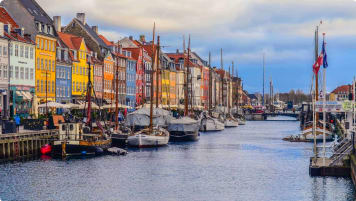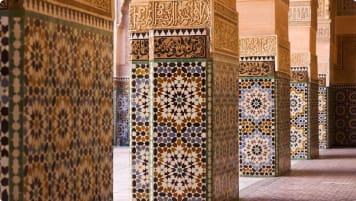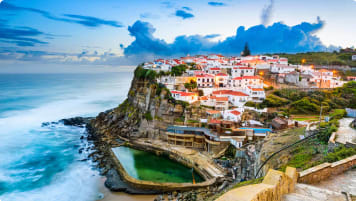How the Atlantic Ocean Shaped Early Life In Europe
Article of interest for senior couples and mature solo travellers joining a small group European tour to Faroe Islands, Scottish Isles, Morocco or Portugal. Focus is on the early exploration of the Atlantic.
1 Sep 21 · 12 mins read

The Atlantic Ocean and its Secrets
The Earth’s oceans are billions of years old and studying them, over the centuries, has offered some clues about human history and how the oceans might have shaped the world as we know it today. Studying oceans can give us a sense of how societies and populations became linked, how certain materials came to be in certain places and the way cultures developed. This branch of academia is often called the study of maritime history but archaeologists, anthropologists, historians and geologists are all interested in the oceans and the secrets that lie beneath their surface.
Seventy-two percent of the Earth’s surface is covered by ocean and the Atlantic Ocean, at approximately 4000 km wide and 4 km deep, is the second largest of the oceans. While nowhere near as deep or expansive as the largest of the oceans, the Pacific, the Atlantic Ocean as the greatest multi-continental shoreline of all the oceans. An elongated, S-shaped basin, it separates Europe and Africa on the east from North and South America on the west. It is considered to be the second youngest of the world’s ocean, with evidence indicating it did not exist prior to 130 million years ago.
The Atlantic has touched the communities who have lived upon its shores in a myriad of ways. For centuries, the Atlantic Ocean, often divided into North and South, has been a key avenue of trade and travel but it also influences climate and geography. In this article, we will look north-eastern Atlantic Ocean and the shore-dwelling communities who lived along the Atlantic coast in prehistoric times. We consider the populations of people who may have crossed the Atlantic as early as 5000 BC. ‘Atlantic history’ tends to focus on connections between the Atlantic’s four continents after 1492 with Christopher Columbus’ journeys but this article will look at a much earlier period of history. We will examine connections forged in the Mesolithic and Neolithic ages and how separate communities, in what is now France, Spain and Portugal, may have been linked to those in northern Scotland.
This article is inspired by David Abulafia’s book The Boundless Sea (Allen Lane 2019) and various articles linked throughout. If you are interested in discovering more about the histories of those countries on the Atlantic coast, such as the Faroe Islands, Portugal and Morocco, please explore our many articles here. Odyssey Traveller offers a variety of tours that will allow you to explore the Atlantic coastline and learn the impact of the Atlantic Ocean through the history of the particular country. Our tour of the Scottish Isles, for example, and our South America tour both allow you to explore landscapes where the Atlantic Ocean is a central feature. Many of Odyssey’s guided tours of Europe offer the chance to travel the continent in a small group of like-minded people, visiting amazing heritage sites and discovering beautiful hidden gems along the way. If you’re interested in a European vacation please have a look at some of the trips we have on offer and the memorable European destinations we visit.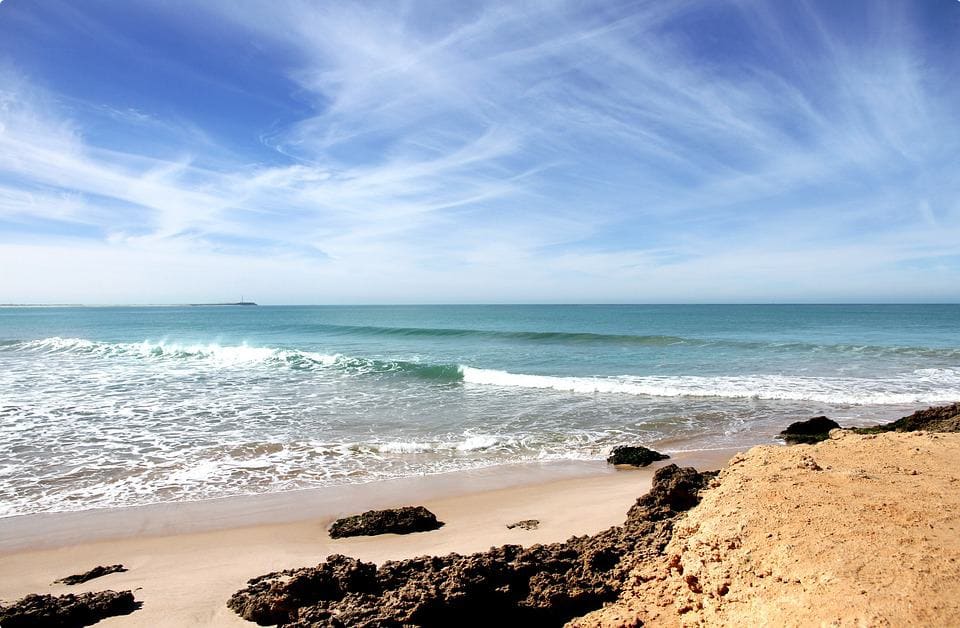 A view of the Atlantic Ocean from a beach in Morocco
A view of the Atlantic Ocean from a beach in Morocco
Rising Sea Levels in the Atlantic
Currently, many communities across the world are feeling the effect of rising sea levels and the power that oceans can have in terms of forcing migration and human movement. This was the case millennia ago as well and the rise and fall of the sea levels in the Atlantic dramatically influenced the way parts of Europe was settled. The beginning of the warm phase of the Ice Age, mostly recognised as the end of the last Ice Age, is known as the Holocene period.
20,000 years ago, much of Europe was covered in vast ice sheets. This sea levels were almost 400 ft lower than they are today. When the climate began to warm, the ice sheets began to melt and initially, this encouraged human populations to move into areas that now had more congenial climates. However, the melted ice began to return to the sea and seawater levels slowly rose, submerging some lands that had once been livable.
Doggerland: The Europe that Was
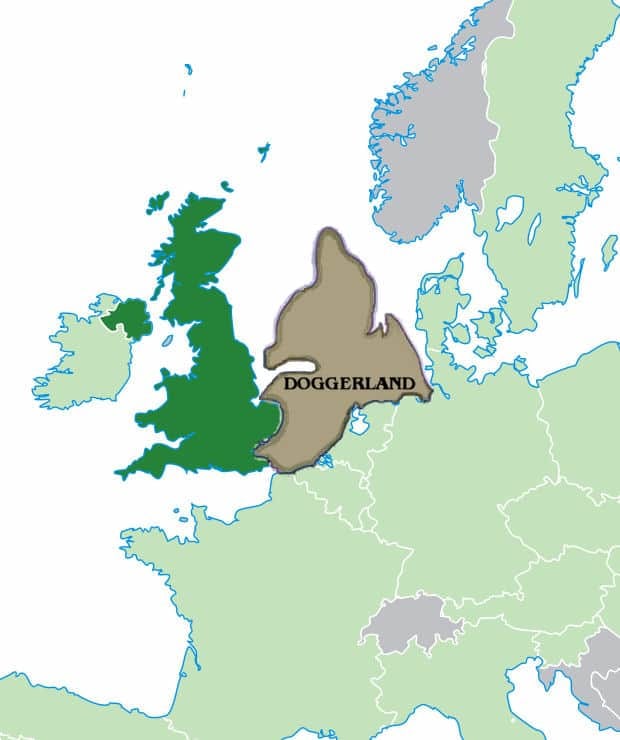
Doggerland refers to the submerged land mass beneath the North Sea that once connected mainland Europe and Britain. Signs of this forgotten part of Europe first emerged in the late 19th century when Dutch fishermen would drag weighted nets along the sea floor around this area. While trawling, they often hoisted up things that they could not make sense of, including enormous tusks, the remains of extinct beasts or lumps of peat that contained ornate prehistoric tools. It was the exploits of these Dutch fisherman that first suggested that a lost world might exist, deep below the North Sea’s surface.
The vanished land became known as Doggerland, named after Dogger Bank, the sandbank once thought to be an uninhabited land bridge between the British Isles and Europe. Dogger Bank was thought to be a way that populations could traverse between the two land masses but now it seems that it was part of Doggerland, an area that Mesolithic people settled and inhabited around 8,000 BC until they could no longer live there due to rapidly rising sea levels.
Thanks to the work of archaeologists and scientists, we now have some understanding of what Doggerland might have looked like and its discovery has added to our knowledge of the Mesolithic period and the way people lived during this period.
Mesolithic Europe
The Mesolithic period generally refers to the period between the retreat of the Scandinavian Ice Sheet, which gave way to new, liveable lands, and the origins of agriculture around 7000 to 4000 BC. By 8000 BC, the Neanderthals,of the Upper Paleolithic, who had lived through the Ice Age, were extinct and the human population around Europe was thinly spread. During the Mesolithic period, populations began to reach the Atlantic seashore and communities became more settled. It was in this time that villages began to form as groups of people marked out their territories and began to inhabit specific areas. Coastal areas, with the access to food supply in the form of fish and seafood and mild climates, were attractive places to live and became densely settled. While little information about the groups of people who lived along the Atlantic shore exists today, some archaeological sites still exist in certain coastal communities such as the Scottish Islands or the Brittany region in France.
While Mesolithic peoples relied on hunting and gathering food, they differed from the Paleolithic peoples before them in that they made tools, such as harpoons, blade and arrowheads, for the purposes of hunting. Over the Mesolithic period, there is evidence to suggest the tools became increasingly more complex.
Brittany, France

The westernmost region of France, Brittany is a peninsula that juts out into the Atlantic Ocean. It has long been a source of fascination for maritime explorers due to the number of Mesolithic and Neolithic sites in the area. It is a rich source of information about how people lived during this period of history.
Archaeological studies have shown that humans have been eating crustaceans since prehistoric times and middens in Brittany similarly confirm this. Middens are deposits of shells and bones left by early civilisations and often contain broken tools, ash from fires and household objects from a certain period of history. Excavating middens can provide an insight into how certain populations lived. In Brittany, there are a number of middens that contain the remains of seafood, indicating that by 5000 BC the communities that lived there were pescatarian, relying heavily on catching food from the sea, rather than hunting birds.
Teviec is an island in Brittany, situated to the west of the peninsula of Quiberon. It is a significant due to its occupation during the Mesolithic period and the many archaeological finds that suggest populations living there from as far back as 6,700 BC. At this time, when the sea level was lower, Teviec would likely have been situated in a lagoon and you could walk, or wade, from France to England. Many middens have been found on the island and these contain the remains of shellfish, such as squid and crustaceans, fish, birds and mammals such as boar, deer and dogs. The discoveries of archaeologists Marthe and Saint-Just Péquart in the 1930s showed the early Bretons buried their dead in the middens, which had the effect of helping to preserve the graves by insulating them from the acidity of the soil.
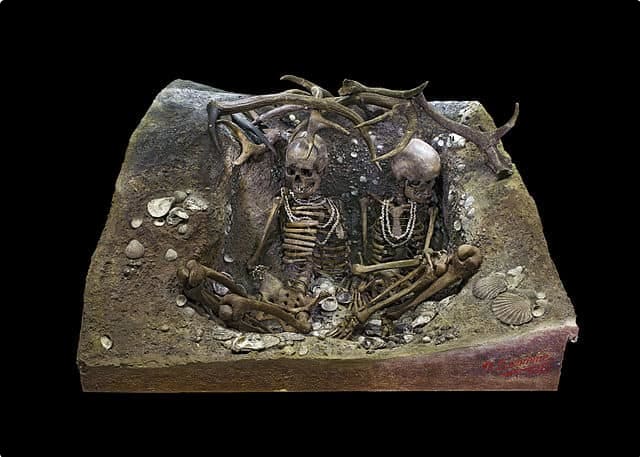
One of their most fascinating discoveries was the grave of two young women who appeared to have been killed violently before having their bodies decorated with jewellery for burial. Known as the ‘Ladies of Teviec’, the mystery surrounding their deaths endures to this day and scientists continue to study their skeletons for further clues about the lives they led, the communities they came from and the nature of their deaths.
Scottish Islands
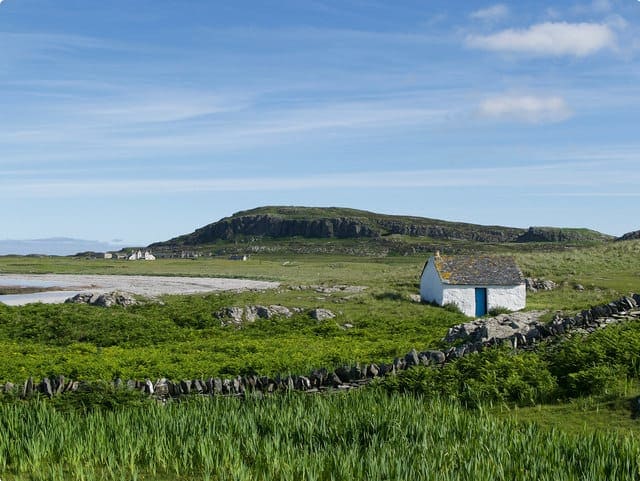
Northern Scotland and its islands were also hubs of Mesolithic activity and many archaeological sites survive there today. In the tiny island of Oronsay, part of the Inner Hebrides, five shell middens have been found. Oronsay would already have been an offshore island in the Mesolithic period and the middens indicate people inhabited the land as long as 6,000 years ago.
The five middens around the island are all about 1 km apart and are close to the beach, facing east away from the Atlantic winds. This spacing indicates to archaeologists that communities moved along the shoreline as they exhausted their food supply, which was predominantly limpets or molluscs. Moving along the shoreline gave the limpets the change to regenerate throughout the year until the community made their way back. The evidence that people moved from midden to midden demonstrates that they were either permanent inhabitants of the island or they came on seasonal visits from nearby islands, such as Jura and Islay,
Denmark

In Denmark, Ertebølle culture refers to a hunter-gatherer and fisher, pottery-making culture dating to the end of the Mesolithic period. In Ertebølle, a small village in Danish Jutland, inhabitants lived off food gathered from both the sea and the land. They hunted fish, such as cod, herring and flounder, seals, eels and pike but they also ate any animals they could find, including wolves, pine marten and lynx.
Tools discovered from the time indicate that fishermen constructed fish traps out of wickerwork and fish fences, made of 4 m long hazel sticks set in the mud. They also made log-boats, some up to ten metres long, and paddles with leaf-shaped blades attached. The presence of deep-sea fish in middens found in the area indicates that the inhabitants were venturing out into the ocean in order to catch food.
It is argued by historians that, because these inhabitants relied heavily on seafood as their source of food, nautical skills were needed in order to navigate inshore waters and potentially deep ocean water as well. As a result, nautical skills and ability to hunt fish would have been valued over martial skills usually associated with terrestrial hunting, such as shooting arrows.
Neolithic Europe and Cross-Atlantic Travels
The period from the beginning of agriculture (around 7000 BC in Greece but later in other parts of Europe) to the widespread use of bronze about 2300 BC is known as the Neolithic period. In some parts of Europe, it overlaps with the Mesolithic period. By the fifth millennium however, farming technology was beginning to spread across Europe and animals became domesticated. This had a great impact not only on the diets of populations but also their lifestyles and the way their communities were organised.
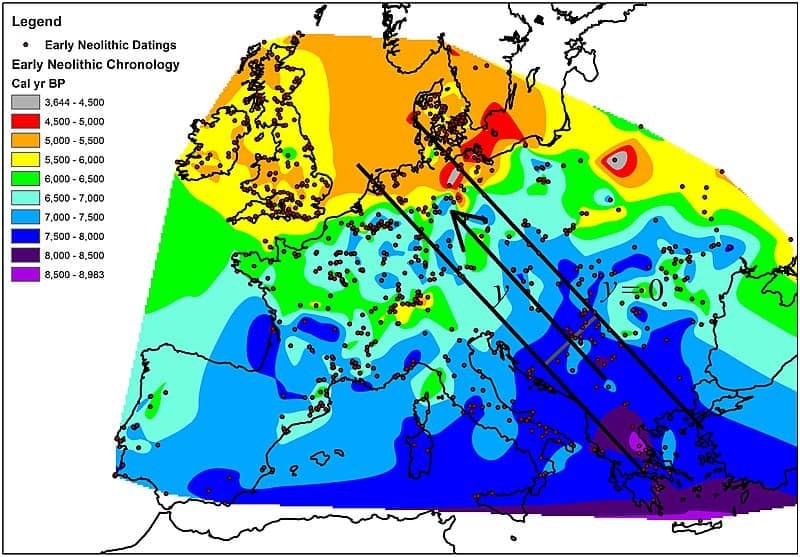
Rather than a pescatarian diet, rich in crustaceans and molluscs, Neolithic inhabitants of Europe enjoyed a grain-based diet which featured dairy products and meat, rather than maritime products. The adopting of farming methods saw tasks within these groups of people become more specialised and this led to the emergence of political elites who would organise production for the rest of the hierarchy.
A point of interest for archaeologists and historians is whether these Neolithic Europeans were descendants of the Mesolithic inhabitants or were migrants from different places who settled along the Atlantic coastline. What has become clear is that in the sixth to fourth millennia BC sea contact was occurring along this coastline, made visible in tombs found in various places across the British Isles and European continent which suggest contact between communities separated by the Atlantic. For example, in Scotland there is a passage tomb from around 4,000 BC which indicates cross-Atlantic travel between Brittany and Scotland. A passage tomb is a type of burial chamber covered in earth or with stone that features a narrow access passage lined with stone. Passage tombs or stones are characteristic of the ‘megalithic’ culture. In this particular passage tomb, located at Achnacreebaeg, archaeologists found examples of pottery that would have been from a time when the art of pottery had not yet been learned in Scotland. The pots found in the grave were from Brittany and Lower Normandy, which indicates that they were carried across the open sea. For this reason, historians hypothesise that a small group of Bretons travelled from Brittany to parts of the British Isles including Cornwall, Wales and Scotland around 4,000 BC, the time at which passage tombs were becoming the norm in Brittany. As well as this, objects from Iberia have been found in passage tombs in Brittany, indicating movement between Spain and France. What such passage tombs tell us is that Neolithic Europeans had the skills and knowledge to cross tracts of the Atlantic Ocean.Orkney and Skara Brae: The Mystery of the Tombs
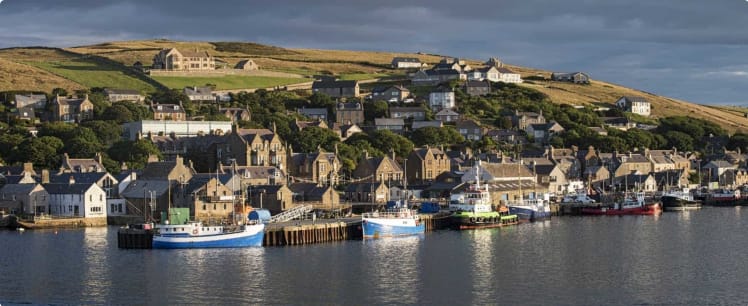
On the Bay of Skail on the west coast of Mainland you will find Skara Brae, a stone-built Neolithic settlement and one of Orkney’s (and Europe’s) most remarkable prehistoric monuments. The settlement is made up of eight clustered houses and is thought to be older than Stonehenge and the Great Pyramids, with analysis suggesting the settlement was occupied from roughly 3180 BC to 2500 BC.
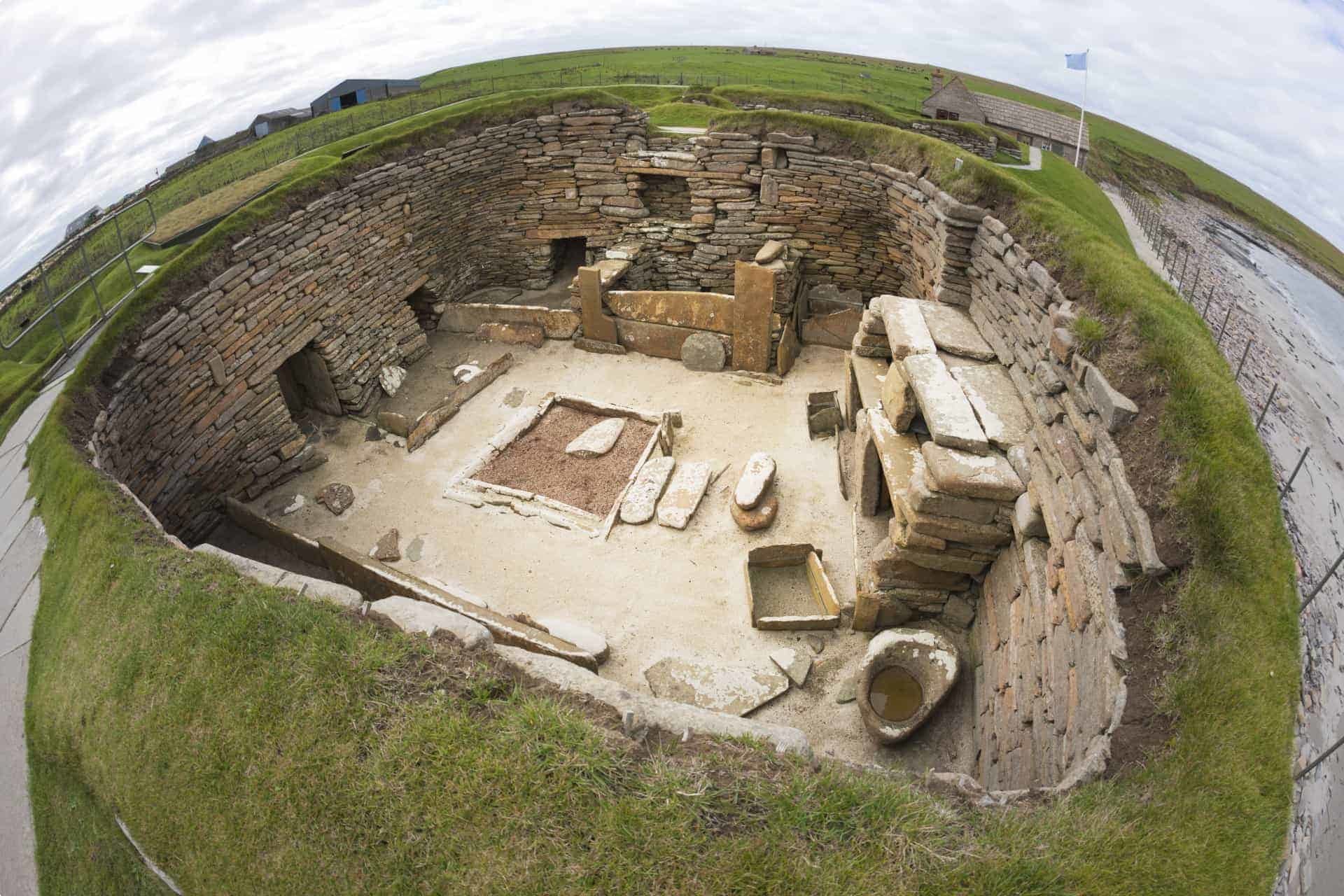
Orkney has long fascinated archaeologists and historians due the numerous important prehistoric remains scattered across the archipelago. Many of these monuments, including Skara Brae, are very well-preserved partly because of the wind-blown sands and the relative lack of industrialisation in the area.
Researchers believe that first Neolithic settlers on Orkney arrived around 3600 BC with animals including cattle, sheep and deer. They made the most of island living, catching fish and consuming shellfish as well as using farming practices. Inhabitants lived in small communities across the islands, constructing their houses with stone slabs, like those seen at Skara Brae. The half a dozen houses at Skara Brae are fitted out with stone cupboards and shelving and even furniture that resembles a dresser or display cabinet of some kind. This was clear from some of the artefacts found in ‘storage boxes’ at Skara Brae, including pendants, pins and dish containing pigment made out of whale vertebrae. As well as homes, there were also workshops where archaeologists believe Neolithic settlers knapped their flint.
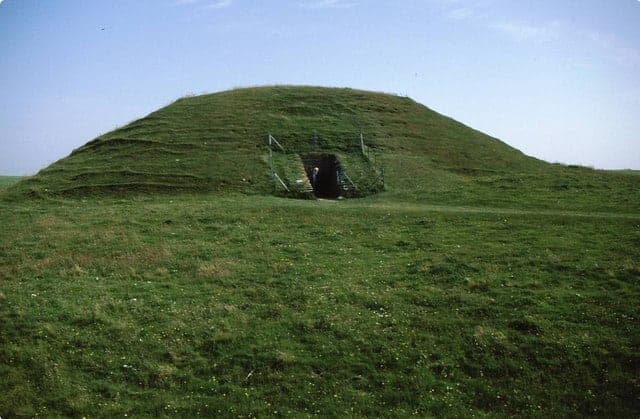
Near Skara Brae is Maeshowe, one of the largest tombs in Orkney with the mound encasing the tomb rising to height of over 7 metres. Beneath the mound lies a complex network of passages and chambers built artfully with craft slabs of stone, neatly fitted together. The islanders who built Maeshowe must have been skilled in astronomy because the monument is carefully aligned with the solstices, suggesting that sun and moon ritual were conducted by settlers. The decoration on the stones at Maeshowe bear remarkable similarity to those found on the stones of New Grange in Ireland, strengthening theories that there was cultural contact between these communities who were separated by bodies of water.
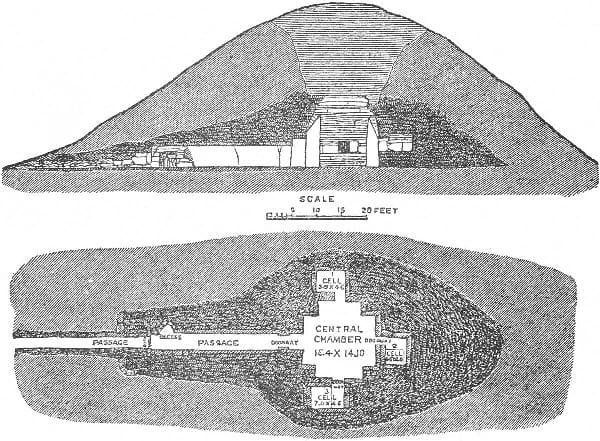
What remains puzzling about the Neolithic settlements on Orkney is the contents of chambered tombs found across the islands. Rather than finding whole skeletons, like those found in Teviec, archaeologists have instead found tombs filled with a vast amount of bones from disarticulated skeletons. For example, researchers found a tomb containing many foot bones but few other bones which suggests that bodies were allowed to decompose and then the bones were collected and reburied somewhere. The discovery of these strange tombs hints an elaborate funerary practice that encompassed the entire island, if bones were being sorted into specific categories after decomposition.
Communities along the Atlantic seaboard
So what does all this tell us about the development of humans and the role of the Atlantic ocean? The similarity in burial traditions and passage tombs along the Atlantic seaboard suggests that there was a lot of human movement happening between Iberia, Britain and Brittany and that there were regular sea voyages taking place between the north-west corner of France, the north-west corner of Spain and the Irish Sea. Brittany was essentially at the centre of these voyages and this can be seen in the way that practices from Brittany spread to its maritime neighbours.
This tells us that although Atlantic history tends to focus on Columbus, the Vikings and Portuguese travels to the Americas, there is a much richer history to the voyages along the Atlantic Ocean. The ocean played an incredibly important role in defining how humans moved and settled around Europe, drawing people to the coast like a magnet as they hunted for fish and constructed primitive boats. As communities developed, they ventured deeper and further into the seas, finding new lands. The evidence of a common north-eastern Atlantic culture shows that people were moving across considerable distances, forging connections and imparting culture where they went.
Studying sites like Skara Brae and Teviec offers a window into what life might have been like many millennia ago and can help historians make sense of why things are the way they are today. Travelling to these places gives travellers the chance to expand their knowledge of this time period and experience prehistoric architecture at its most impressive. This especially pertinent considering the challenges communities face today with climate change and the eerie similarities of these challenges to those faced by those in the Mesolithic period.
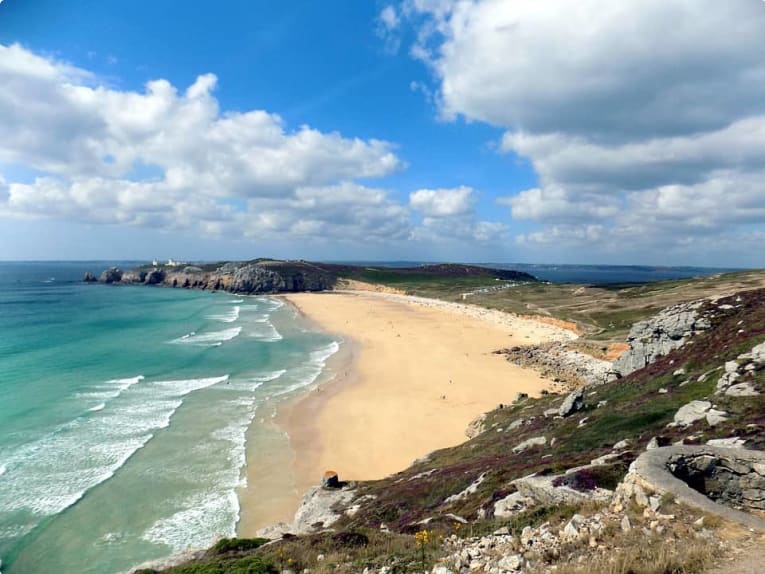
If you are interested in a trip to Europe, please take a look at our Europe tour packages. Wherever you wish to explore, whether it be Portugal and its Atlantic coast, the Amalfi coast and southern Italy, Croatia and the Dalmatian coast, Germany and the Bavarian Alps, the breathtaking city of Prague or Venice and its canals, there will be a tour to suit your needs and experience. Regardless of where you choose for your vacation, you are sure to enjoy spectacular scenery, mouthwatering local cuisine and an abundance of history and culture with the benefit of a local guide, tour leader and pre-booked accommodation.
Updated September 2021.
Related Tours
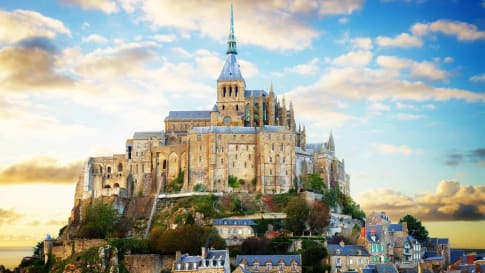
22 days
Apr, May, SepAnglo French Tour | Normandy, Brittany, Channel Islands tour
Visiting Channel Islands, England
Our 21 night program has daily itineraries with plenty of authentic experiences provided by passionate local guides in the key destinations in France, Channel Islands and England for this small group of like minded people. For Solo travellers minimal single supplement applies for this European tour.
From A$18,995 AUD
View Tour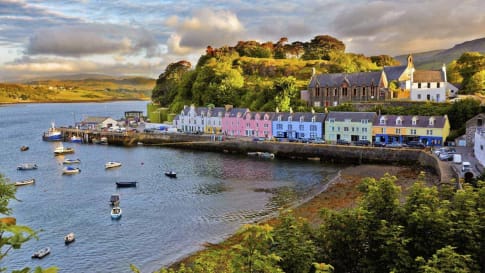
20 days
May, Jul, Aug, SepScottish Islands and Shetland small group tours for seniors
Visiting Scotland
An escorted small group tour for couples and solo travellers of the Scottish isles including the isle of Skye draws on local guides to share their knowledge of the destinations in this unique part of Scotland. UNESCO world heritage site are visited as breathtaking scenery and authentic experiences are shared in a group of like minded people on this guided tour of remote Scotland.
From A$17,525 AUD
View Tour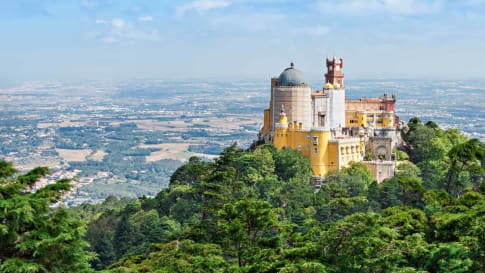
18 days
Aug, AprDiscover Portugal
Visiting Portugal
Join Odyssey Traveller small group journeys with like minded people on this immersive 18-day escorted tour of Portugal. This travel experience takes us from the capital of Lisbon, through Portugal's many historic cities and key UNESCO World heritage sites.
From A$11,835 AUD
View Tour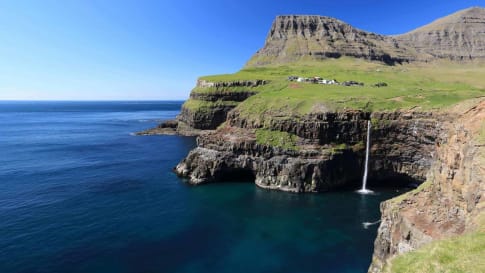
5 days
Apr, SepFaroe Islands Tour
Visiting Denmark
Few European tour companies offer small group journeys to the Faroe Islands. This five-day small group tour designed for mature couples and solo travellers. Local guides take you on trips off the beaten path to visit some of the islands' most stunning sights and to explore the capital of Tórshavn.
From A$7,250 AUD
View Tour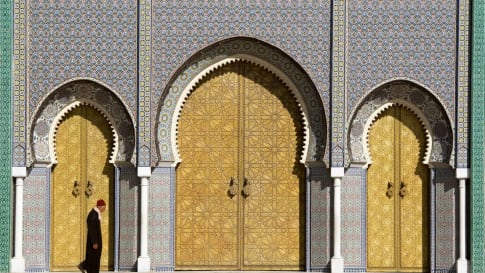
20 days
Apr, Oct, MarMorocco tour for senior travellers
Visiting Morocco
Embark on an unforgettable journey through Morocco: A Gateway to a world of vibrant colors, cultural diversity, and endless wonder. Join our escorted small group tour designed for senior travellers, whether you're a couple or a solo adventurer, and immerse yourself in the captivating allure of Casablanca, Fez, Meknes, Rabat, Marrakech and beyond. Experience the richness of Moroccan traditions and heritage as we explore this enchanting destination.
From A$11,915 AUD
View Tour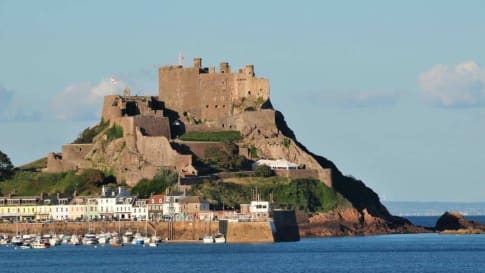
18 days
Sep, MayChannel Islands | A small group walking tour for seniors
Visiting Channel Islands
Another Small group tour of the British isles of the Channel Islands. This fully escorted, small group walking tour, takes the active senior off the beaten path with local guides to Jersey, Guernsey, Alderney, Sark and Herm.
From A$16,310 AUD
View Tour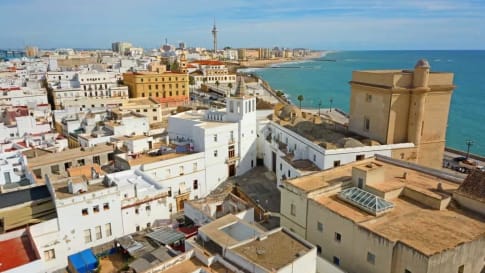
21 days
May, Aug, SepHabsburg Spain vs Tudor England: small group tour exploring 16th century history of England & Spain
Visiting England
This holiday with a leading tour operator allows the escorted tour for seniors to explore the life and times of the royal families responsible for making England and Spain so significant in the 16th century with local guides providing the travel experience for the detailed itineraries. We spend 10 days travelling from London to Madrid.
From A$14,995 AUD
View Tour